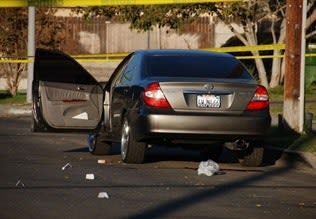By the end of the week, we had a moniker on the shooter and shortly thereafter, we had him identified. Aptly enough, he called himself "Criminal," a parolee at large and a documented gang banger with a long and violent criminal history. The hunt was on. By Jan. 4, a relentless search by dedicated detectives and gang officers from the South Bay Gang Task Force had tracked Criminal to his crash pad.
As is so often the case, this hardened killer of children declined to test his skills against those willing to be tested. His anti-climatic surrender came with a whimper, his meek exit into custody a testament to the cowardly lifestyle so falsely represented on television as heroic and glamorous. In the end, he was just another self-absorbed, methamphetamine-addled sociopath unfit and undeserving of life in civilized society.
Detectives moved quickly to shore up the case. More and more citizens came forward with information and firsthand accounts—six packs were made and shown; identifications obtained; and most damning of all, his girlfriend, the getaway driver, was identified, located and convinced to roll over on her boyfriend. In the end, the criminal case was a slam dunk. Criminal was tried, found guilty and sentenced to life in prison, without the possibility of parole. He would never see the free light of day again.
Like so many other innocents before her, Leslie died a violent and brutal death—caught in the crossfire of a senseless gang culture immune to the pain and suffering they cause to those around them. Many years have passed since that day. Like most cases, once the press fades, the victims slowly start to dissolve into faceless, nameless statistics—unremembered except by family and friends whose lives will never be the same.
Having lived a small part of that nightmare, I sometimes feel that it's part of my duty to remember. To remind myself why I do this job—to remind myself that without law enforcement officers willing to fight the good fight, there will only be more Leslie Zepedas dying needlessly and more "Criminals" killing wantonly. Even if I wanted that memory to go away, who could ever forget an 11-year-old dead on the ground the day after Christmas? Not me.












